 Publisher: Autodesk
Publisher: Autodesk
Platforms: PC, Mac, Linux
Description: 3D Animation & Production Suite
MSRP: individual suite $5775, Premium $6825, Ultimate $8395
Expected Release: N/A
Official Website: autodesk.com
Samples: Click Here
Demo: Click Here
Special Discount: N/A
Review Issue: March Issue – #85 (03/13)
Review By: Michael J. Muwanguzi
The way of capturing stories for the screen is in an important transitional stage. Computer generated sets and characters have become an integral part of movie making and the production process needs to bridge the gap between what’s shot on screen and what’s built in the computer. To that end, Autodesk, Lightstorm Entertainment, and Weta Digital have pulled their collective experience and resources together to formulate technologies that will allow filmmakers to explore on the set. Continuing the initiative from 2013, Autodesk 2014 has offered a sneak peek into the next stage on pushing virtual production.
Autodesk has released a preview of what is to come in the new 2014 suite. For the most part, it looks like most of the enhancements are meant to support a virtual production environment. Each piece of software brings unique strengths to the table that make having the entire suite at your disposal a huge benefit. This article is dedicated to pulling out the most exciting features in each software package.
Maya
Exciting news for modelers is the inclusion of dRaster NEX plugin to the regular lineup of modeling tools. For those that aren’t familiar with NEX, it’s a powerful toolset with options for working with polygons. Most of what you’ll find are more robust versions of tools commonly found in Maya such as splitting faces and adding edge loops. The rest of the features are unique to NEX like the ability to work symmetrically on a mirrored mesh or QuadDraw that let’s artist retopologize their assets. In 2014, the new Polygon Reduction Algorithm is brand new to NEX and will be interesting to see how it carries out the operation of optimizing polygon meshes.
A new annotation tool called the Grease Pencil lets creatives sketch or write on individual keyframes. Animators can draw a figure for each keyframe and make a plan before working with the 3D character. For the director or supervisor, the grease pencil lets them make notes or draw over top of the frame in the viewport without disrupting the scene. Anything written is saved as a part of an image plane sequence to be turned off and on. This is a great communication tool that stays with the project and helps artists to think things through traditionally in a digital environment.
Scene Assembly, with the Alembic file format, was introduced in 2013 to handle huge scenes with a ton of objects. In 2014, it now supports level of detail that can be set an assigned on an individual basis or globally throughout the scene. Any modifications to the objects can be made on any LOD and recognized by whoever accesses the file in a production network. Then for different studios or production houses that have proprietary set ups, the Alembic API allows developers to connect to these systems to improve their virtual production pipeline.
3ds Max
Populate is new crowd generation tool that will allow artists to fill a scene quickly with digital extras. It’s as easy as drawing a path on the plane surface for the characters to walk along or creating a spot for them to hang out. The tool comes with a set of predefined animations that the generated humans will use, but there is still room to tweak the settings to correspond to their actions. A quick and cost-efficient way to fill a scene with a crowd that will be seen from a distance.
Speaking of scenes, 3ds Max now has tools to combining filmed shots with CG elements. The Perspective match tool lets you designate angles of the XYZ coordinates for an image plate so that a camera can snap into the appropriate position. That way any props or characters plugged into the scene will match up with environment without the hassle of positioning it by hand and it being slightly off. And to make sure you don’t mess up the position of the camera, the 2D pan and zoom allows the user to move around the scene without disturbing the 3D camera. Great additions for building virtual set pieces.
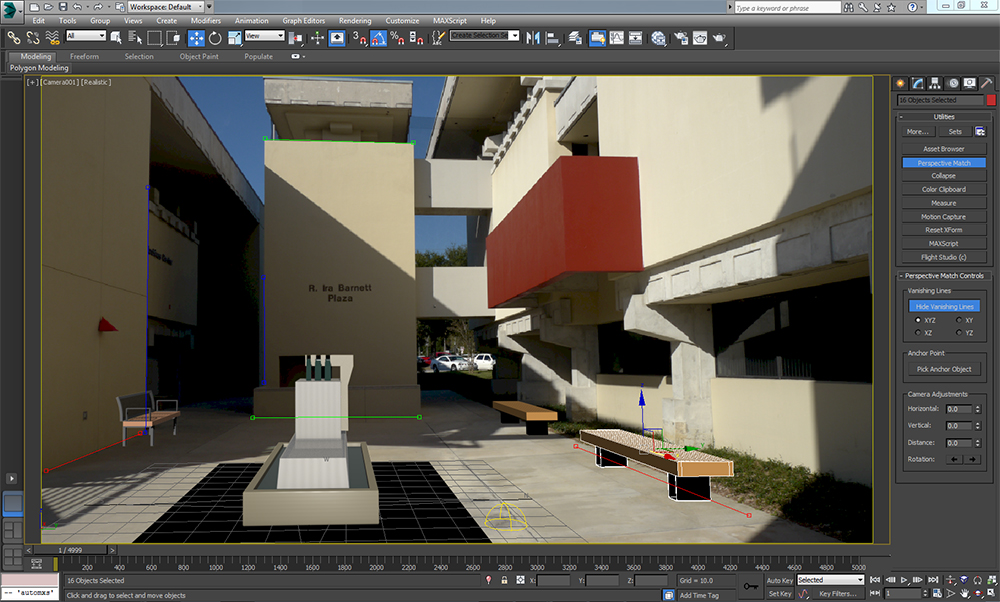
Perspective Match helps artist quickly prepare a film plate so that digital assets can be placed in the scene believably.
State Sets are great for handling different render passes and user interface layouts. Object modifiers can now be maintained in different state sets for more control when creating render passes. The interface has been reorganized for clarity and can be accessed simply by right-clicking. Docking it in the viewport makes it even easier to access as well. State Sets can also allow you to preserve After Effects text objects with the type, size, and kerning through the media sync. A motion graphic artist could get the most out of having that kind of control and interplay that State Sets make available.
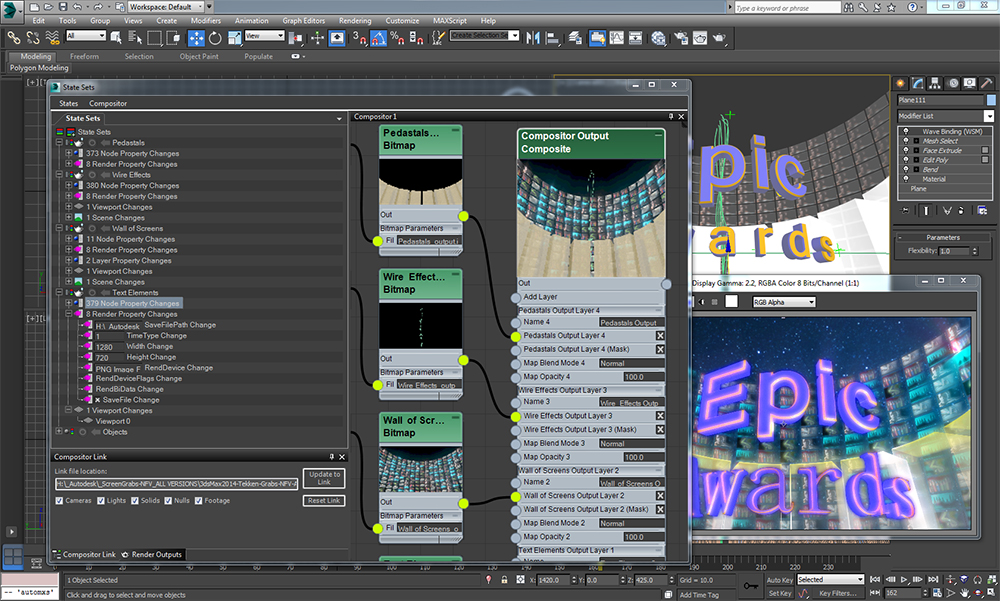
State Sets will be beneficial to a motion graphic production that wants to bring 3ds Max’s toolset into their pipeline.
Softimage
The new Camera Sequencer included in Softimage 2014 offers an interesting option to handle cutting together an animated scene without using a secondary film editing solution like Adobe After Effects or Premiere. Artists can jump between different cameras and non-destructively modify the timing of the clips being recorded. Animators can define the look and feel of a scene before exporting the individual clips and assembling it some where else which would definitely cut an extra step out of the process.
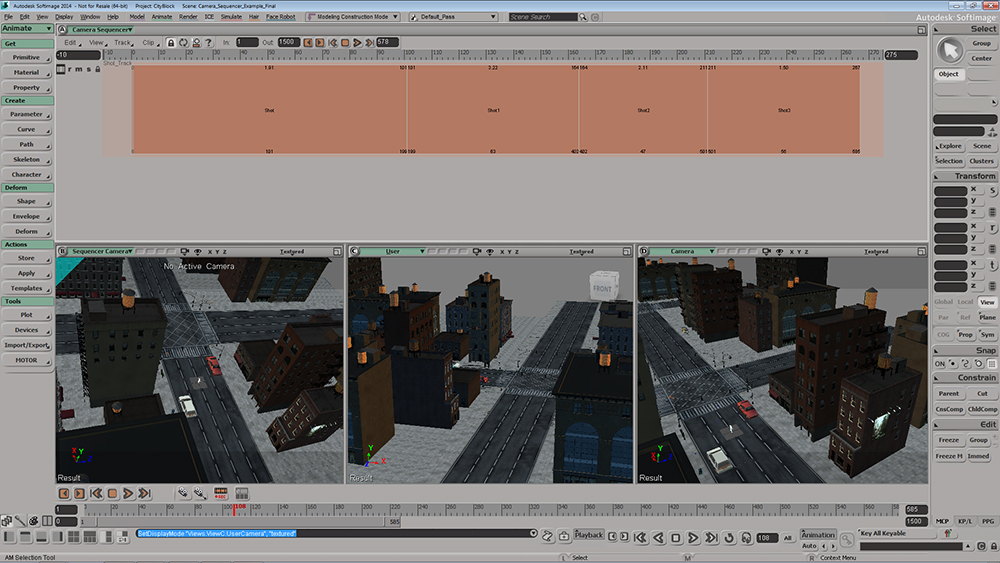
Camera Sequencer lets artists create a rough cut of their scene without jumping into another editor.
Introduced in Softimage 2013, CrowdFX is an ICE driven simulator for creating digital actors. Extending the feature set, CrowdFX can now let artists manage the behavior of character’s in groups or in individuals. Animations that come with the simulator can be blended or adjusted using the ICE node tree logic-based network. Every node component offer a myriad of customizable arrangements to make crowd movement performance unique.
MotionBuilder
Flexible Mocap takes the optical data taken on a stage and repurposes it to a digital actor within MotionBuilder 2014. Marker designation is as simple as drag and drop to assign real-world marker data to the HumanIK character. Another plus is being able to use Python scripting to run an automation that attaches the mocap marker data to the corresponding joint in the rig. At which point the HumanIK system solves the transition of moving each point to their position in the timeline. But if in the process of running the animation you find that the performance needs to be tweaked, the Story timeline can be used to introduce a joint offset that realigns the position of the selected body parts. Extending that functionality, the Contraint and/or Character settings lets users access even more options such as global offsets and stretchy IKs. Having an open mocap solution like this allows animators to thoroughly craft the performance of their characters.
Another feature that would be helpful to people working on the set is the new heads-up display options. The Bloop Slate displays all the clips that MotionBuilder operator creates and passes it along to someone else in another location. The people making the final decisions can select the ones the want without having to have the original software on location. Then for the camera men operating the virtual camera, the Timeline shows their position in a head/tail fashion that is indicated in the scene’s time.
The Ruler tool in MotionBuilder helps artists that need to reposition the characters and props to match an actual set. Leveraging the improved z-depth selection, artists can use the ruler to snap the ends and get an accurate reading of the placement of two objects. Taking the measurements, filmmakers can adjust props on the set and make sure that everything syncs up.
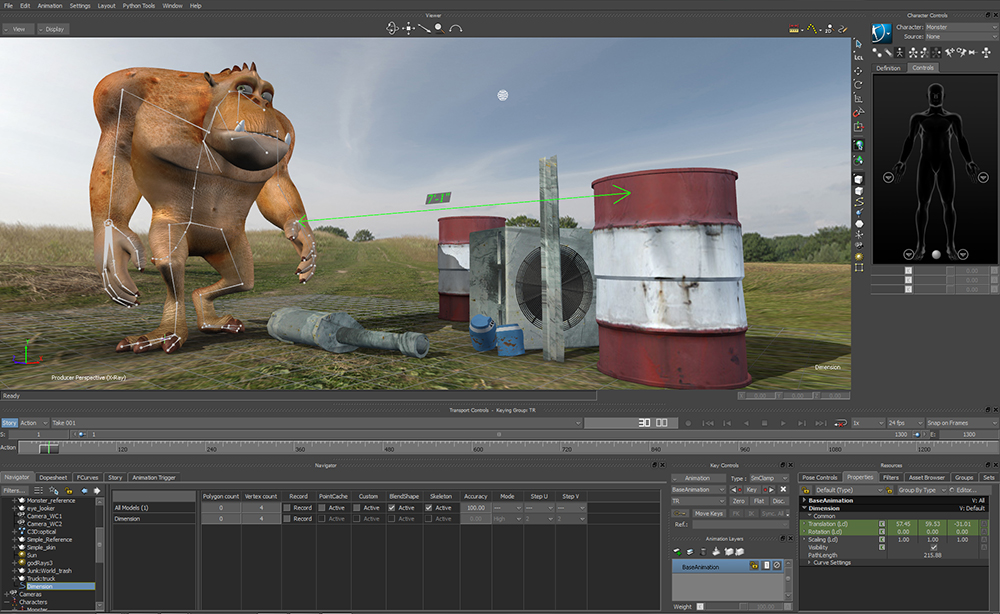
Ruler tool in MotionBuilder 2014 lets artists confirm the spatial relations between objects both digital and real-world.
Mudbox
Mudbox 2014 brings an important new feature that will speed up the production of any agency that creates high-fidelity images. The advanced retopology tool adds several ways for an artist to reduce the polycount and create an animation-ready mesh. The base level of a high res mesh can be reduced by a set number of polygons or percentage while retaining the definition of the model. If you want more control, curves can be implemented to direct edge flow while designating transitions as being either hard or soft by selecting it in the right-click menu. In the process, if the mesh gets artifacts like holes or rough areas, these can be patched and smoothed respectively. These tools will most likely become an indispensable part of any modeler’s workflow in the future.
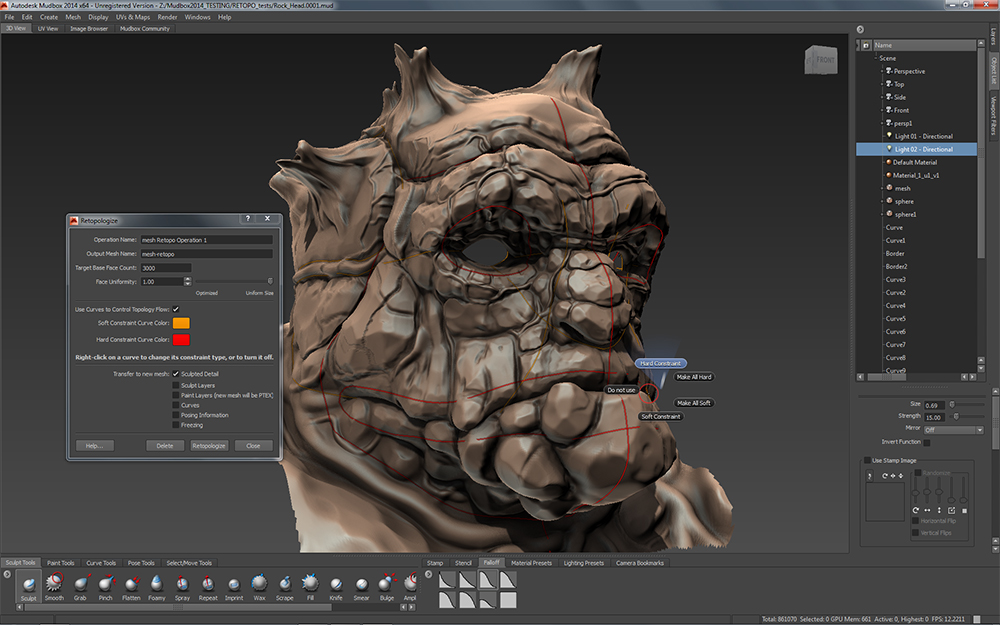
Advanced Retopology in Mudbox 2014 is going to speed up a process that has been traditionally slowed down at this point in the pipeline.
Final Comments
Aside from the few additions listed above, most of the software packages have general improvements included across the board. The viewports for Maya, 3ds Max, and Softimage all take advantage of Direct X 11 offering better real-time graphics that were not possible before. Different API’s have been created and enhanced to create connection points between Autodesk programs and any proprietary software making it feasible to create custom pipelines that fit individual environments. And if there is anything that you as a customer would like to see that hasn’t been addressed in any of these applications, Autodesk now provides links for specific programs so that people can bring any issues to the attention of the developers while letting the community vote on what they think is most pertinent. The evolution of the virtual production in the hands of Autodesk looks like it’s building a strong foundation.
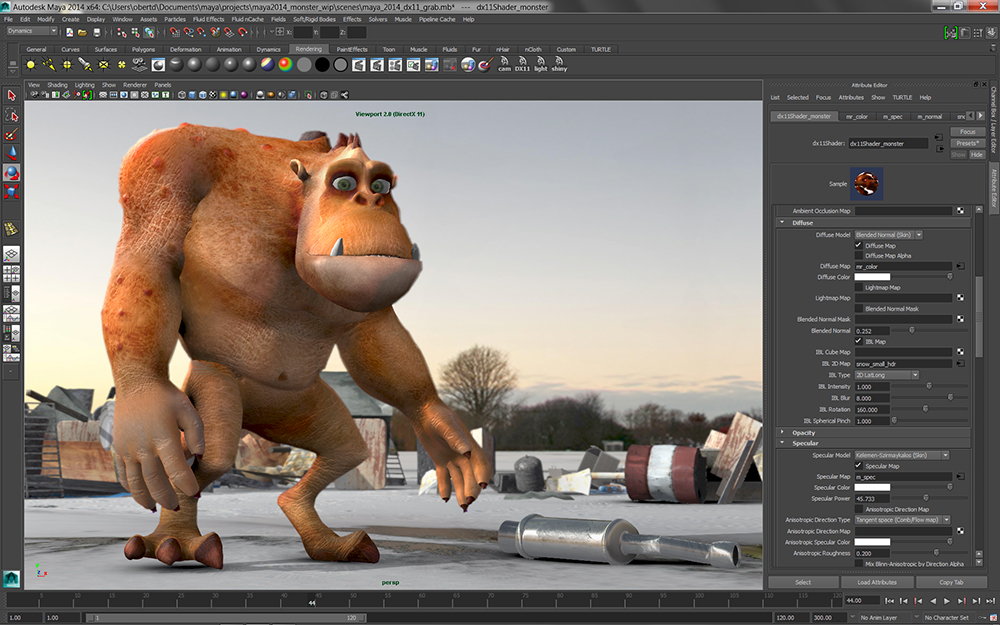
Autodesk animation packages all make use of the power of Direct X 11 to create richer real-time graphics.
Stay tuned for reviews of Autodesk software for 2014!

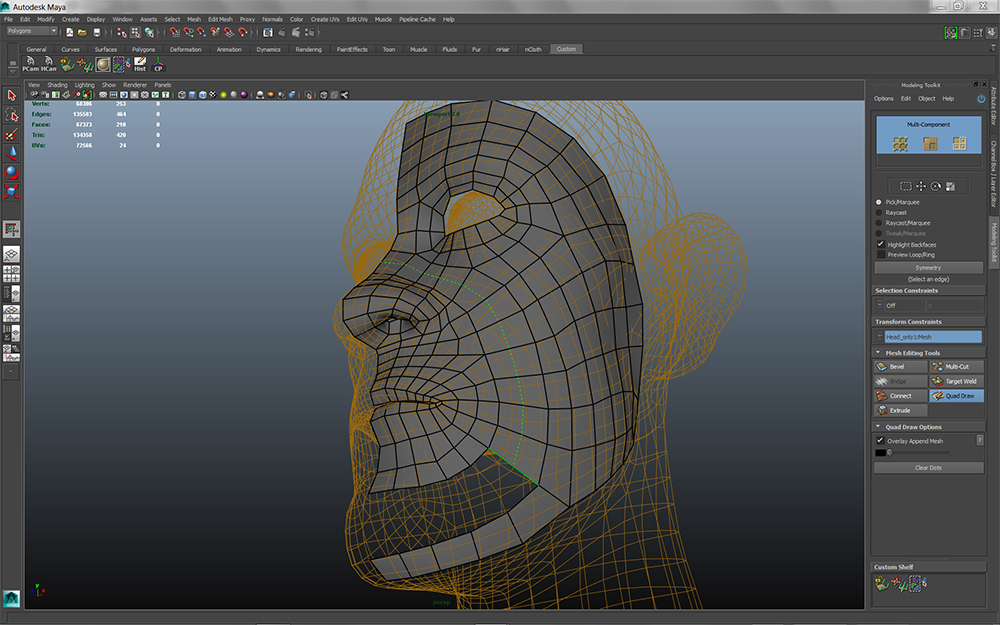
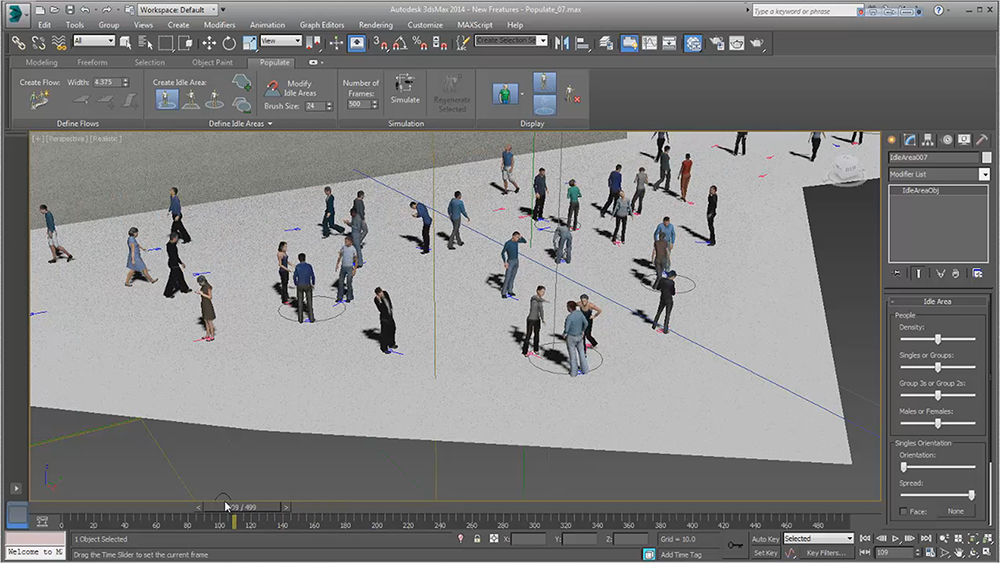

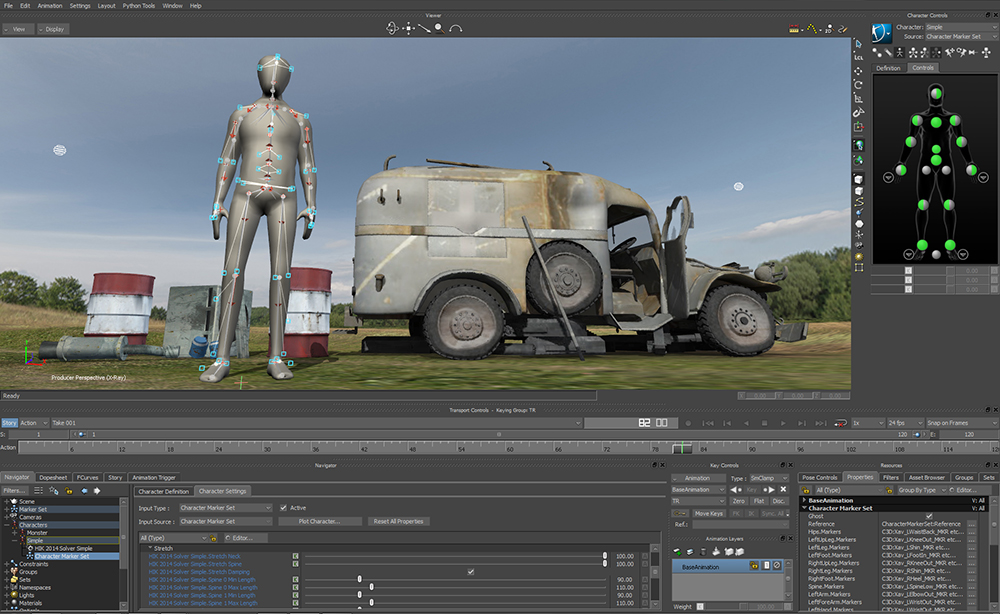
1 Comment
It’s going to be end of mine day, but before finish I am reading this impressive article to increase my experience.